CentOS7.Xシステムのインストールと最適化
セントスの進化##
プロセスsysvinit ###を開始します
シリアルブート:一度に1つずつ、1つずつ
パラレルスタート:すべて一緒にスタート
initの利点
それは非常にうまく動作します。主にシェルスクリプトに依存します
初期化の欠点
1、 スロースタート
2、 克服しやすい、fstabおよびnfsの取り付けの問題
- 新興技術
使用したバージョン:
centos6
ubuntu14
- システム技術
initの固有の欠点を克服し、システムの起動速度を向上させます
移行コストを削減する
- 3つのスタートアップテクノロジーの比較

- 並列起動の3つの原則:
1、 ソケットの依存関係/ポートの依存関係を解決する
ソケットネットワークソケットファイル
2、 Dバスを解く
依存関係:D-Busは、[メッセージキュー](https://cloud.tencent.com/product/cmq?from=10680)と同様に、プログラム間の通信ツールとして使用され、情報をキャッシュできます。
3、 autofsメカニズムと同様に、ファイルシステムの依存関係を解決します
-
centos7システムをインストールする
-
仮想マシンの選択
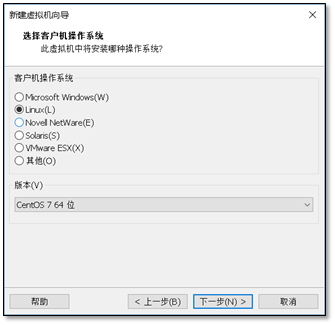
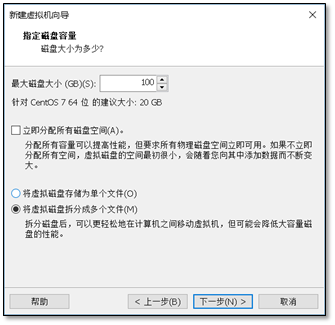
できるだけ多くのディスク容量

- システムのインストール
1 )インストールを起動します
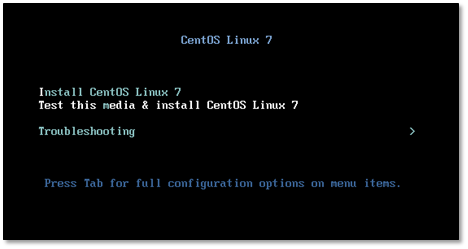
2 )TABを押す

カーネルパラメータを追加して、ネットワークカード名をethにします
スペースにnet.ifnames = 0 biosdevname = 0と入力し、Enterキーを押します
- 言語を選択してください

- ネットワーク接続とホスト名を設定する

** 5) パワーオンオートスタートの確認にご注意ください**
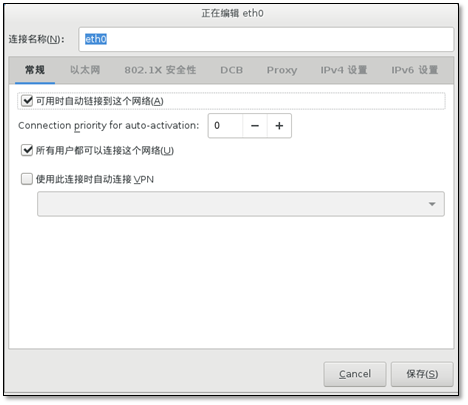
- IPアドレスを設定する

同じ方法で別のネットワークカードを構成します
- ホスト名を変更する

- インストール環境を選択し、最小限のインストールを選択します。
依存パッケージの確認に注意してください

9 )ディスクパーティションはカスタムパーティションです。

/ bootマウントポイントのサイズを選択します。ここで1gに設定
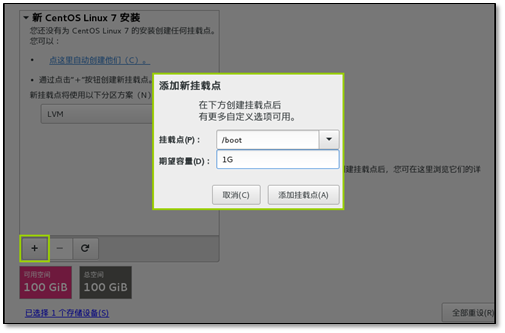
スワップマウントポイントを追加します

選択はすべて標準のパーティションタイプであり、ディスクに直接書き込むことに注意してください

ルートパーティションを追加すると、選択が完了します。

パスワード保護をオフにする

閉じるを選択
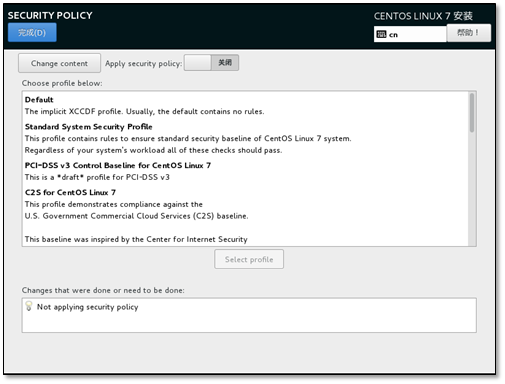
KDUMP機能をオフにする
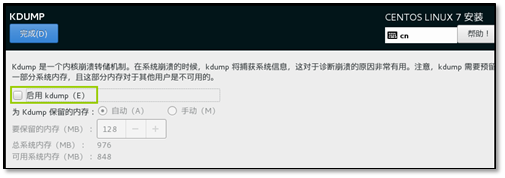
インストールを開始し、469個のパッケージに注意してください

インストール時にrootパスワードを設定します。
- インストール後の最適化
システムバージョンを表示
[ root@CentOS7 ~]# cat /etc/redhat-release
CentOS Linux release 7.3.1611(Core)
yumソース、ベースソースを変更します
[ root@CentOS7 ~]# curl -o /etc/yum.repos.d/CentOS-Base.repo http://mirrors.aliyun.com/repo/Centos-7.repo
% Total % Received % Xferd Average Speed Time Time Time Current
Dload Upload Total Spent Left Speed
100257310025730029400--:--:----:--:----:--:--2940
** epelソース**
[ root@CentOS7 ~]# curl -o /etc/yum.repos.d/epel.repo http://mirrors.aliyun.com/repo/epel-7.repo
% Total % Received % Xferd Average Speed Time Time Time Current
Dload Upload Total Spent Left Speed
100108410010840091500:00:010:00:01--:--:--916
ソフトウェアをインストールする
yum install vim wget bash-completion lrzsz nmap nc tree htop iftop net-tools -y
コマンドパラメータを完了するためのbash-completionパッケージ
-
centos7とcentos6の違い
-
ネットワークカード交換後の名称変更の問題を解決
名前を変更する方法
CentOS7ネットワークカードの名前を従来の名前eth0形式に変更しますhttp://oldboy.blog.51cto.com/2561410/1722101
- nmtui
centos7でのネットワーク管理のためのグラフィカルツール
- ホスト名設定ファイルの違い
一時的なホスト名
永続的な/ etc / hostname
[ root@CentOS7 ~]# cat /etc/hostname
CentOS7
ワンステップで完了
[ root@CentOS7 ~]# hostnamectl
Static hostname: CentOS7
Icon name: computer-vm
Chassis: vm
Machine ID: 4ab1c20b25f64a38a7197b8453b04b2c
Boot ID: abd0a393540b4788bc1e571b413b33c4
Virtualization: vmware
Operating System: CentOS Linux 7(Core)
CPE OS Name: cpe:/o:centos:centos:7
Kernel: Linux 3.10.0-514.el7.x86_64
Architecture: x86-64
ホスト名を変更する
[ root@CentOS7 ~]# hostnamectl set-hostname clsn
- キャラクターセット
- 一時的*
[ root@clsn ~]# echo $LANG
zh_CN.UTF-
- パーマネント*
[ root@clsn ~]# cat /etc/locale.conf
LANG="zh_CN.UTF-8"
ワンステップで完了
[ root@clsn ~]# localectl
System Locale: LANG=zh_CN.UTF-8
VC Keymap: cn
X11 Layout: cn
- システムバージョン番号を表示する
[ root@clsn bin]# cat /etc/os-release
NAME="CentOS Linux"
VERSION="7 (Core)"
ID="centos"
ID_LIKE="rhel fedora"
VERSION_ID="7"
PRETTY_NAME="CentOS Linux 7 (Core)"
ANSI_COLOR="0;31"
CPE_NAME="cpe:/o:centos:centos:7"
HOME_URL="https://www.centos.org/"
BUG_REPORT_URL="https://bugs.centos.org/"
CENTOS_MANTISBT_PROJECT="CentOS-7"
CENTOS_MANTISBT_PROJECT_VERSION="7"
REDHAT_SUPPORT_PRODUCT="centos"
REDHAT_SUPPORT_PRODUCT_VERSION="7"
- 互換性のあるrc.local
cat /etc/rc.local
# Please note that you must run 'chmod +x /etc/rc.d/rc.local' to ensure
# that this script will be executed during boot.
rc.localを使用して実行権限を付与したい
[ root@clsn bin]# chmod +x /etc/rc.d/rc.local
[ root@clsn bin]# ll /etc/rc.d/rc.local
- rwxr-xr-x.1ルートルート47311 2016年7月7日/etc/rc.d/rc.local
- 実行レベル
実行レベルを表示する以前の方法は引き続き使用されます
[ root@clsn init.d]# runlevel
N 3
元の実行レベルファイル
[ root@clsn ~]# ls -lh /usr/lib/systemd/system/runlevel*.target
lrwxrwxrwx.1ルートルート1311年11月15日:16/usr/lib/systemd/system/runlevel0.target -> poweroff.target
lrwxrwxrwx.1ルートルート1311年11月13日:16/usr/lib/systemd/system/runlevel1.target -> rescue.target
lrwxrwxrwx.1ルートルート1311年11月17日:16/usr/lib/systemd/system/runlevel2.target -> multi-user.target
lrwxrwxrwx.1ルートルート1311年11月17日:16/usr/lib/systemd/system/runlevel3.target -> multi-user.target
lrwxrwxrwx.1ルートルート1311年11月17日:16/usr/lib/systemd/system/runlevel4.target -> multi-user.target
lrwxrwxrwx.1ルートルート1311年11月16日:16/usr/lib/systemd/system/runlevel5.target -> graphical.target
lrwxrwxrwx.1ルートルート1311年11月13日:16/usr/lib/systemd/system/runlevel6.target -> reboot.target
7 実行レベルを設定する
root@clsn init.d]# systemctl get-default multi-user.target
systemctl get-default #実行レベルを表示
- 例*
[ root@clsn ~]# systemctl get-default
multi-user.target
[ root@clsn ~]# systemctl set-default multi-user.target
Removed symlink /etc/systemd/system/default.target.
Created symlink from/etc/systemd/system/default.target to /usr/lib/systemd/system/multi-user.target.
実行レベルの変更
[ root@clsn ~]# ls -lh /usr/lib/systemd/system/runlevel*.target
lrwxrwxrwx.1ルートルート1311年11月15日:16/usr/lib/systemd/system/runlevel0.target -> poweroff.target
lrwxrwxrwx.1ルートルート1311年11月13日:16/usr/lib/systemd/system/runlevel1.target -> rescue.target
lrwxrwxrwx.1ルートルート1311年11月17日:16/usr/lib/systemd/system/runlevel2.target -> multi-user.target
lrwxrwxrwx.1ルートルート1311年11月17日:16/usr/lib/systemd/system/runlevel3.target -> multi-user.target
lrwxrwxrwx.1ルートルート1311年11月17日:16/usr/lib/systemd/system/runlevel4.target -> multi-user.target
lrwxrwxrwx.1ルートルート1311年11月16日:16/usr/lib/systemd/system/runlevel5.target -> graphical.target
lrwxrwxrwx.1ルートルート1311年11月13日:16/usr/lib/systemd/system/runlevel6.target -> reboot.target
- systemdが世界を支配する
システム起動ファイルのディレクトリ
[ root@clsn init.d]# ls /usr/lib/systemd/system
- 開始コマンドの例*
[ root@clsn init.d]# cat /usr/lib/systemd/system/crond.service
[ Unit]
Description=Command Scheduler
After=auditd.service systemd-user-sessions.service time-sync.target
[ Service]
EnvironmentFile=/etc/sysconfig/crond
ExecStart=/usr/sbin/crond -n $CRONDARGS
ExecReload=/bin/kill -HUP $MAINPID
KillMode=process
[ Install]
WantedBy=multi-user.target
構文形式http://www.jinbuguo.com/systemd/systemd.service.html
- 管理サービス
ファイアウォールサービスをオフにして、自動的に開始します
systemctl stop postfix.service
systemctl disable postfix.service
ファイアウォールの詳細なプロセスをオフにします
[ root@clsn ~]# systemctl disable firewalld.service
Removed symlink /etc/systemd/system/multi-user.target.wants/firewalld.service.
Removed symlink /etc/systemd/system/dbus-org.fedoraproject.FirewallD1.service.[root@clsn ~]# systemctl stop firewalld.service
[ root@clsn ~]# systemctl status firewalld.service
systemctl:serviceとchkconfigの機能を統合し、SysVおよびLSB起動スクリプトと互換性があり、起動プロセス中にサービスをより効果的にブートロードすることができます。 。
- コマンドの比較
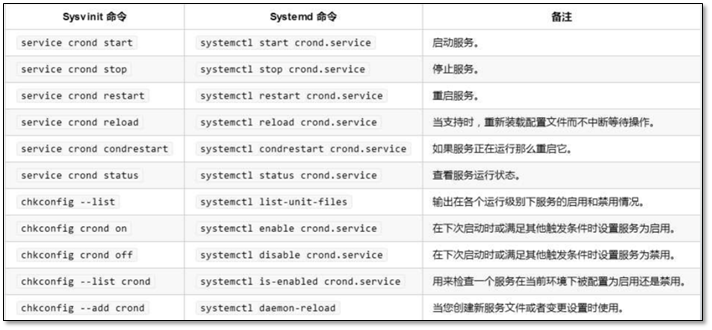
systemctl start crond.serviceには、systemctl startcrondと同じ効果があります。
- 起動時間の最適化
systemd-analyze time
systemd-analyze blame
systemd-analyze plot >bootime.avg
起動時間
[ root@clsn system]# systemd-analyze time
Startup finished in387ms(kernel)+1.406s(initrd)+31.831s(userspace)=33.626s
特定の使用時間を確認してください
[ root@clsn system]# systemd-analyze blame
10.812 s sshd-keygen.service
10.758 s abrt-ccpp.service
6.395 s chronyd.service
……
生産チャート
[ root@clsn tmp]# systemd-analyze plot >bootime.svg
[ root@clsn tmp]# sz bootime.svg

- スタートアップアイテムの最適化
[ root@kickstart ~]# systemctl list-unit-files|egrep "^ab|^aud|^kdump|vm|^md|^mic|^post|lvm"|awk '{print $1}'|sed -r 's#(.*)#systemctl disable &#g'|bash
Removed symlink /etc/systemd/system/multi-user.target.wants/abrt-ccpp.service.
Removed symlink /etc/systemd/system/multi-user.target.wants/abrt-oops.service.
Removed symlink /etc/systemd/system/multi-user.target.wants/abrt-vmcore.service.
Removed symlink /etc/systemd/system/multi-user.target.wants/abrt-xorg.service.
Removed symlink /etc/systemd/system/multi-user.target.wants/abrtd.service.
Removed symlink /etc/systemd/system/multi-user.target.wants/auditd.service.
Removed symlink /etc/systemd/system/basic.target.wants/microcode.service.
Removed symlink /etc/systemd/system/multi-user.target.wants/vmtoolsd.service.
Removed symlink /etc/systemd/system/vmtoolsd.service.requires/vgauthd.service.
-
OpenStackデプロイメント最適化環境
-
ネットワークカード構成ファイルを変更する
最初のマイルストーン:再起動が完了したら、システムにログインします#
[ root@localhost ~]# vi /etc/sysconfig/network-scripts/ifcfg-eth0
TYPE=Ethernet
BOOTPROTO=dhcp
DEFROUTE=yes
PEERDNS=yes
PEERROUTES=yes
IPV4_FAILURE_FATAL=no
IPV6INIT=yes
IPV6_AUTOCONF=yes
IPV6_DEFROUTE=yes
IPV6_PEERDNS=yes
IPV6_PEERROUTES=yes
IPV6_FAILURE_FATAL=no
NAME=eth0
UUID=4bf2af89-5f6d-4979-83e9-df6ce1c3cc41
DEVICE=eth0
ONBOOT=no
2番目のマイルストーン:余分な行を削除し、次のコンテンツのみを残します#
TYPE=Ethernet
BOOTPROTO=dhcp
NAME=eth0
DEVICE=eth0
ONBOOT=no
3番目のマイルストーン:上記に基づいて、構成を続行します#
赤は変更および追加された部分です
次のコードは、最適化されたネットワークカード構成です#
TYPE=Ethernet
BOOTPROTO=none #dhcpをキャンセルする
NAME=eth0
DEVICE=eth0
ONBOOT=yes #起動を設定する
IPADDR=10.0.0.11 #IPアドレス
NETMASK=255.255.255.0 #サブネットマスク
GATEWAY=10.0.0.254 #ゲートウェイ
DNS1=223.5.5.5 #DNS
説明:/etc/init.d/networkrestartと同じ効果
5番目のマイルストーン:pingを確認し、ゲートウェイ10.0.0.254#のネットワーク接続をテストします。
ping 10.0.0.254-c2
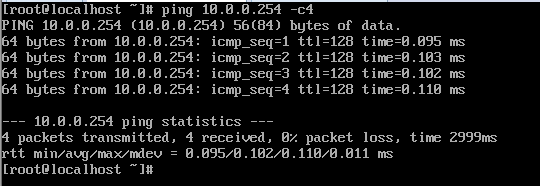
ここで、わかりました、xshellを楽しく使用できます
- システムの最適化
xshellにログインして最適化を開始します#
- ファイアウォールの最適化
systemctl disable firewalld.service
systemctl stop firewalld
- Selinuxの最適化
sed -i 's#SELINUX=enforcing#SELINUX=disabled#g' /etc/selinux/config
- sshの最適化
変更完了後の赤い部分#
vi /etc/ssh/sshd_config
93 行:GSSAPIAuthentication no
129 行:UseDNS no
sed -i '93s@GSSAPIAuthentication yes@GSSAPIAuthentication no@;129s@#UseDNS yes@UseDNS no@' /etc/ssh/sshd_config
sshを再起動します#
systemctl restart sshd
- ホストの最適化
vi /etc/hosts
# 2行追加
10.0.0.11 controller
10.0.0.31 compute1
10.0.0.32 compute2
- ホスト名を変更する
hostnamectl set-hostname controller
- Yumソースの最適化
CDを使用してローカルのyumソースを構築する
umount /mnt
cd /etc/yum.repos.d/
mkdir test -p
\ mv *.repo test
echo '[local]
name=local
baseurl=file:///mnt
gpgcheck=0' >local.repo
mount /dev/cdrom /mnt
yum makecache
- その他の最適化
# ネットワークカードのグラフィカル設定モードをオフにします#
systemctl stop NetworkManager.service
systemctl disable NetworkManager.service
# メールサービスをオフにする
systemctl stop postfix.service
systemctl disable postfix.service
# タブ完了コマンドのダウンロード#
yum install -y bash-completion.noarch
# 一般的なコマンドをダウンロードする#
yum install -y net-tools vim lrzsz wget tree screen lsof tcpdump
# これまでのところ、テンプレートマシンの最適化は完了しています。シャットダウンして、クローン作成を開始します。#
shutdown -h now
- 参照
https://access.redhat.com/documentation/zh-CN/Red_Hat_Enterprise_Linux/7/index.html
Recommended Posts